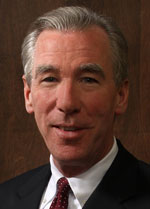There is an ancient human desire to pin the blame on someone — anyone — when things go wrong. In the Dark Ages, some Christian Europeans blamed Jews for the Black Death, or the plague. As late as the 17th century, suspected witches were executed to mitigate real and perceived evils in New England communities.
Today, it’s scientists who are taking the fall.
In the Italian city of L’Aquila, in the forested region of Abruzzo, earthquakes are common. They have been for hundreds of years. Big ones struck in the 14th, 15th and 16th centuries. Thousands died in the earthquake of 1703. The city is built on an ancient lake bed, and the soil structure amplifies seismic waves.
In 2009, a few small tremors caused locals to worry that a much bigger quake was coming. Government scientists from Italy’s National Commission for the Forecast and Prevention of Major Risks were called in to weigh the risks. After studying the situation, the scientists downplayed the possibility of a big quake, arguing that there was “no danger,” and that locals should “remain alert, without panicking.”
As the attorney for scientist Franco Barberi later explained to The Wall Street Journal, the tremors did not necessarily signify an unusually risky situation. “In a very high percentage of 980 out of 1,000 cases, seismic tremors don’t evolve into a destructive quake,” he said. “That doesn’t mean that in one of Italy’s most seismic areas there won’t be a strong earthquake.”
When a big quake did hit, in the early morning of April 6, 2009, it registered 6.3 on the Richter scale. It killed 308 people and injured 1,500. The scientists were not just blamed. They were hauled into court, convicted and given six-year prison sentences for manslaughter. The judge went beyond the four-year sentences the prosecutors had sought.
Scientists have never been able to predict earthquakes. Nor is it clear that a warning would have been all that helpful, unless everyone agreed to abandon the town until a quake occurred — if it ever did. (After all, no one could have known when the quake would hit.)
This verdict cuts against what we rightfully refer to in university life as academic freedom. It was a scientific judgment based on experience and observation, with which many other scientists agreed.
In the late 17th century, the Salem witch trials appealed to false popular superstitions among a relatively uneducated populace. Puritanical magistrates and ministers whipped up panic and warned of a supernatural, satanic inspiration in their midst.
Their efforts elicited false accusations and confessions of witchcraft from among their flock. Within a few years, the absurdity of it became clear, and the credibility of those religious leaders was destroyed. As historian George Lincoln Burr put it centuries later, “The Salem witchcraft was the rock on which the theocracy shattered.”
This ruling in L’Aquila is not an exact parallel, but it represents an abuse of science not unlike the Puritans’ abuse of faith. And it will have the same damaging effect on science, as seismologists and other scientists in Italy avoid making public judgments — or (perhaps more likely, and worse) begin exaggerating risks on purpose, lest they face criminal charges later. When the warnings are real, no one will know.
We rightly criticize religious fundamentalists who reject observed scientific truths on doctrinal grounds. But just as they harm the faith of believers, one can also harm the conduct of science by placing inordinate faith in its ability to give answers where it cannot.
***
Garvey is president of The Catholic University of America in Washington.
PREVIOUS: Pastoral care as an important part of health care
NEXT: Petraeus affair shows we choose heroes poorly




Share this story